Electrical and Computer Engineering at Michigan: A History of People Powering Innovation
Introduction
The history of Electrical and Computer Engineering (ECE) at Michigan reaches back to 1889, when a degree program in electrical engineering was established. It is a discipline founded by some of the greatest inventors in modern history – whose inventions have transformed our world and who literally brought light to the darkness, power and energy to machines, wired and wireless communication to connect the world, and sensing and information retrieval, dissemination, and understanding to people. Computer engineering is a specialty that grew out of electrical engineering, and has similarly transformed our society as dramatically as electrical engineering.
Throughout its history, ECE has maintained close ties with industry. Today, ECE is a leader in the generation of novel ideas, intellectual property, and technology transition impacting our economy, health care, security, and environment.
This is a brief look at how Electrical and Computer Engineering at Michigan grew from 2 faculty and a small lab in the basement of East Engineering with a handful of students in the late 19th century, to a department with programs consistently ranked among the best in the world, $50M in externally funded research expenditures, extensive world-class laboratories and equipment, nearly 1,000 graduate and 600 undergraduate students, 90+ faculty (including teaching and research faculty), and more than 19,000 living alumni.
ECE is one of two independent divisions within EECS, the other being Computer Science and Engineering (CSE). The CSE division, with faculty and student numbers nearly comparable with ECE, will tell its own story.
This comprehensive history of the department focuses on major trends, the contributions of individual faculty as they relate to either major or unique technology, an overview of major labs and centers, major curricular trends and details, a brief summary of tech transfer in the department, and alumni. Additional information may be found in the primary sources listed at the conclusion.
Section I: 1889 – 1940’s
A New Industry and Program in the late 1880’s
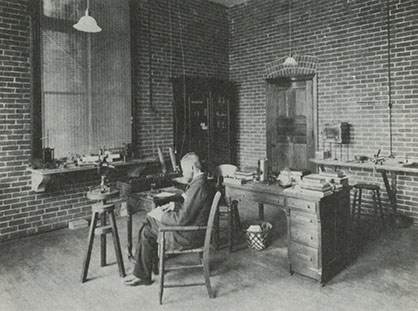
In 1889, Professor Henry Smith Carhart (LL.D. Michigan ’12) offered the first course in dynamo-electric machinery; this is often considered to be the first course in electrical engineering taught at Michigan. However, as early as the 1884 academic year, he taught a course called “Electrical Measurements” a single time. Early in 1888, he repeated the course, now called “Electrical Units and Measurements.”
Carhart was Chair of the Physics Department at the time, yet served as de facto head of electrical engineering until the department was formalized in 1905. His specialty was electrochemistry, and he invented a voltaic cell called the Carhart-Clark Cell in 1889. He was a major force in the construction of the first University Power House, bringing the campus widespread electricity for the first time in 1897, and added the course, “Heat, Electricity and Magnetism.”
In June 1889, the Regents approved an undergraduate degree program in Electrical Engineering. The program included just two core EE courses – the first was Carhart’s course in Dynamo-Electric Machinery, and the second was taught by a newly hired instructor, George W. Patterson, III. This second course covered power distribution and photometry. Three degrees in electrical engineering were granted in 1890.
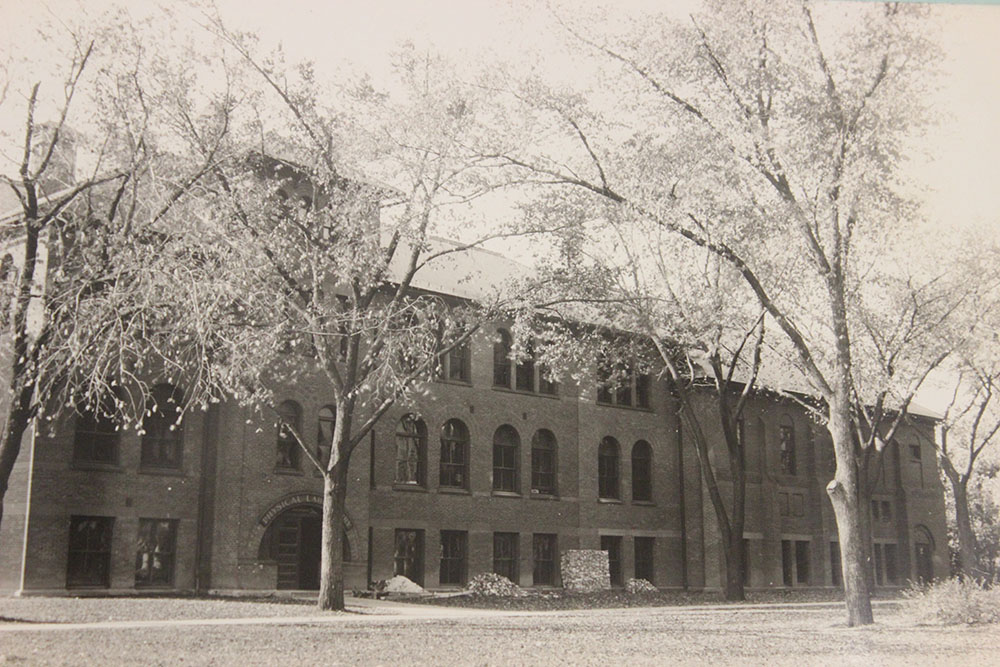
The department’s “birthplace” was an electrical lab located in the Physics Laboratory’s east basement room. The building was taken down in 1967. Although it had survived countless short circuits and sparks, it went up in flames at the mere touch of a wreckers cutting torch. Photo credit: Bentley Historical Library (photo c. 1900)
Courses were taught in the east basement room of the Physics Laboratory. From the very beginning, education of electrical and computer engineering was closely associated with laboratory work. In those first years, there was a one-room lab and a nearby photometric room with a thirty-one-cell storage battery.
Instruments included both an Edison and a Brush dynamo. Thomas Edison (1847-1931) and Charles F. Brush (1849-1929) were active inventors in the early years of electric lighting. Edison’s accomplishments are legendary. Brush graduated from Michigan in 1869, and received an honorary degree in 1912 for being, “the earliest pioneer in the field of electric lighting, [and] inventor of modern arc electric lighting.”
One of the students in Carhart’s lab, Benjamin F. Bailey (BSE MSE PhD EE 1898, 1900, 1907), would become the third Chair of the department, as well as the department’s first historian. He left copious writings that described the field of electrical engineering from his time as a student to when he retired in 1945. Through his words, we can catch a glimpse into what life was like in those early years.
I did all my studying in college by the light of a kerosene lamp, and as far as I know, this was true of all my fellow students. If a student had been told in 1895 that he would someday be able to talk across the ocean, he would hardly have believed it.
Benjamin Bailey
By 1895 there were steam engines (replaced by electric motors in 1898), electric railroads, running water inside the home, electric streetcars, “and many of the comforts of life,” said Bailey. Those comforts, however, did not include electric lighting in the home until much later.
Central stations for the generation of electric power had existed for about 15 years, the telephone was 20 years of age and offered local service only, and the telegraph was about 40. The automobile existed only in the minds of a few crazy inventors – and the airplane was only a dream. “You might as well try to fly” was a common expression. X-rays were announced in 1895, and Bailey, “thought it only another newspaper yarn.” Practical wireless telegraphy (early radio and Morse code in those days) was developed in 1895.
“The science of electronics was not dreamed of and I need not take time to tell of the wonders it has brought to pass and of its even greater promise for the future,” said Bailey. The coursework required of early students reflected the infancy of the field.

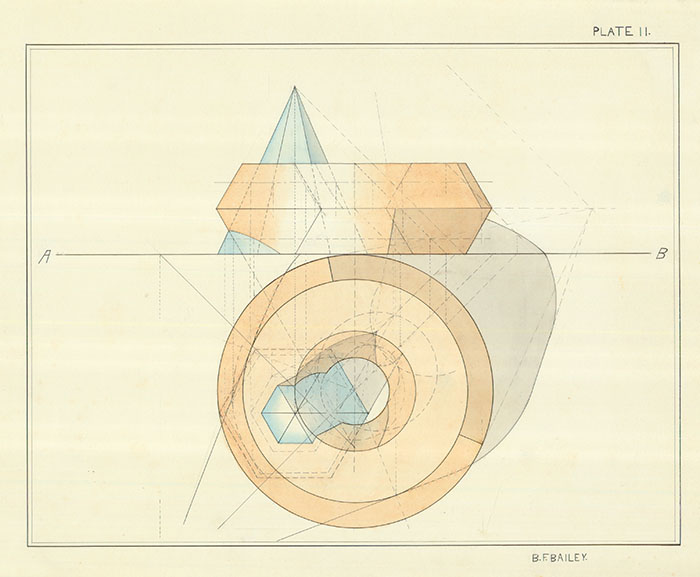
By 1895, students were required to take 125 credit hours in the following areas: Mathematics (22); French or German (20); English (2); Physics (18); Chemistry (8); Drawing (11); Mechanical Eng. (17); Electrical Engineering (11); Electives (16); and a thesis (No credit).
German and French were required in those early years because of Germany and France’s leadership in advanced research in physics and engineering. Drawing courses were required because blueprints and outlines of designs were done entirely by hand. Many of the mechanical engineering courses were in shop. By the 1940’s, the number of drawing courses was cut in half. English, on the other hand, increased to 10 credit hours.
1905: Defining a new discipline in a new department
The Department of Electrical Engineering was officially established in 1905, the year the Regents resolved “that a school of Technology be organized [separate from the Literary College], comprising the departments of Civil Engineering, Mechanical Engineering, and Electrical Engineering.”
George Patterson III was appointed the first Chair of Electrical Engineering, a position he held until 1915. He oversaw the initial growth of the department at a time when the academic field was still being defined. He would later serve as Assistant and Associate Dean of the College of Engineering.
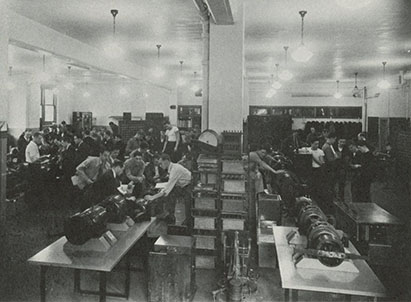
The Dynamo Lab, located in the West Engineering Building, was the Department’s main lab facility from 1910-1947. By 1948, there were 14 dc and ac dynamo labs in the East Engineering Building that included more than 200 motors and generators along with industrial control equipment. The sailors pictured in the photo suggest the photo was taken during World War II. Photo credit: R.K. Brown HistoryIn 1904, the EE program began its move into the basement of West Engineering Building (now called the West Hall), which was only half finished at the time. By 1910, most of the electrical engineering labs, which included the dynamo, communications, and illumination labs, had been transferred to West Engineering.
Research being conducted in the department during the 1890’s and 1900’s included temperature rise in copper conductors, economics of a double trolley railway system, measurement of power in alternating current circuits, the fundamental characteristics of telephone circuits, rectifiers, induction motors, and ignition systems for automobiles.
Harold H. Higbie’s work in illumination established Michigan as a leader in the field. Hired in 1905, he was named President of the Illuminating Engineering Society in 1926-27, and he wrote the pioneering book, Lighting Calculations in 1934. No longer a focus of electrical engineering, Illuminating Engineering is concerned with both natural and man-made lighting in public and private buildings and homes.

Between 1905 and 1915, the number of courses offered in the department doubled from 16 to 32. Coursework in electric communications accounted for many of these new classes. Prof. Lyman F. Morehouse (BSE 1897, MSE 1904) was largely responsible for building up this area. In 1905, he was only the third faculty member hired in the department at the professorial rank.
Morehouse resigned in 1910 to join AT&T – following a path similar to several faculty in the early decades of the 20th century. At AT&T, he vastly increased the distance of transmission while improving clarity. His 1920 patent related to enciphering and deciphering messages was key to telegram communication in WWI.
Following are various photos taken during WWI:

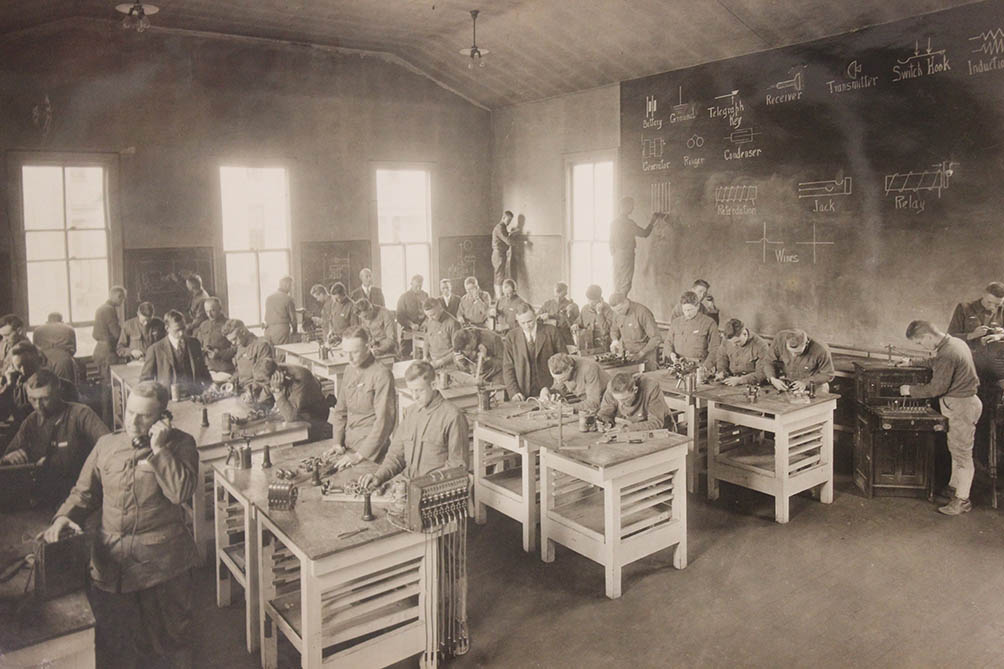


John C. Parker (BSE ME 1901, MS 1902, MSE EE 1904) took over as chair of EE in 1915. He was recruited from industry with extensive experience in electric power transmission, and returned to industry in 1922 to work for Brooklyn Edison Company. He is credited with overseeing the comprehensive reconstruction of the company’s transmission and distribution system, which involved novel work in the development of a low voltage network type of distribution service.
Under Parker, radical changes took place in the curriculum and in the philosophy of the department. The field of electrical engineering was becoming increasingly mathematical at the same time that applications in electricity expanded. Radio became important, and with it electronics as a science was developed. Specialized courses were added in areas such as radio, advanced circuits theory, and advanced design.
By 1920, required coursework in EE jumped to 25 hours, and the number of hours required for graduation to 140. New courses included Storage Batteries, alternating motors and converters, Electric Generating Stations and Sub-Stations, Electric Railways, and courses in Telephone, Telegraph, and Related Apparatus. Faculty began to incorporate more theoretical and design-oriented work into their courses, such as Principles of Electricity and Magnetism. Studies at this time were divided into six groups: Communication, Machine design, Power, Railways, Illumination, and general science.
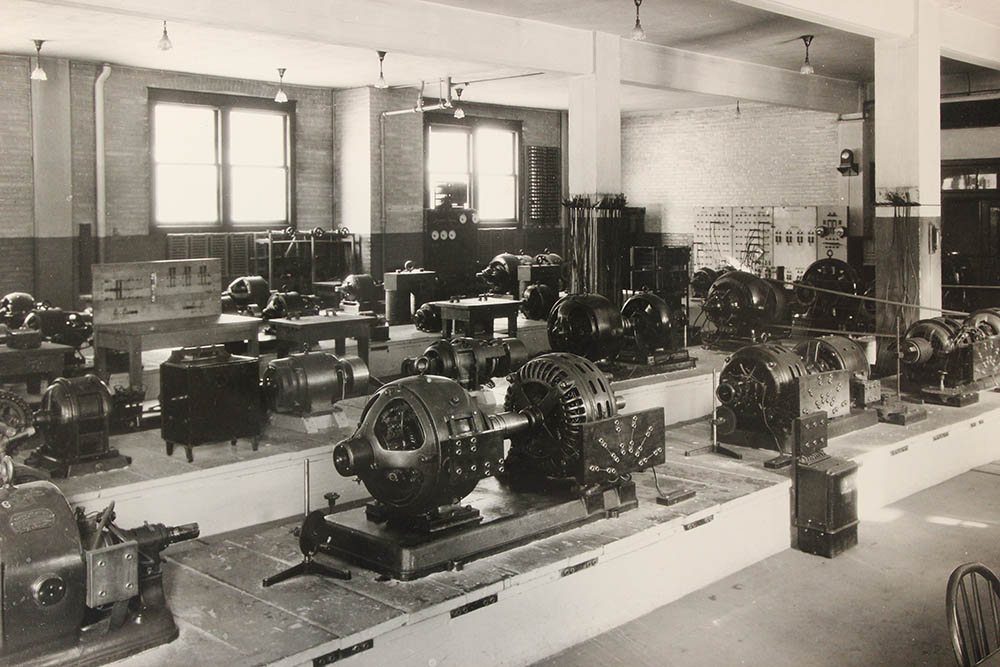
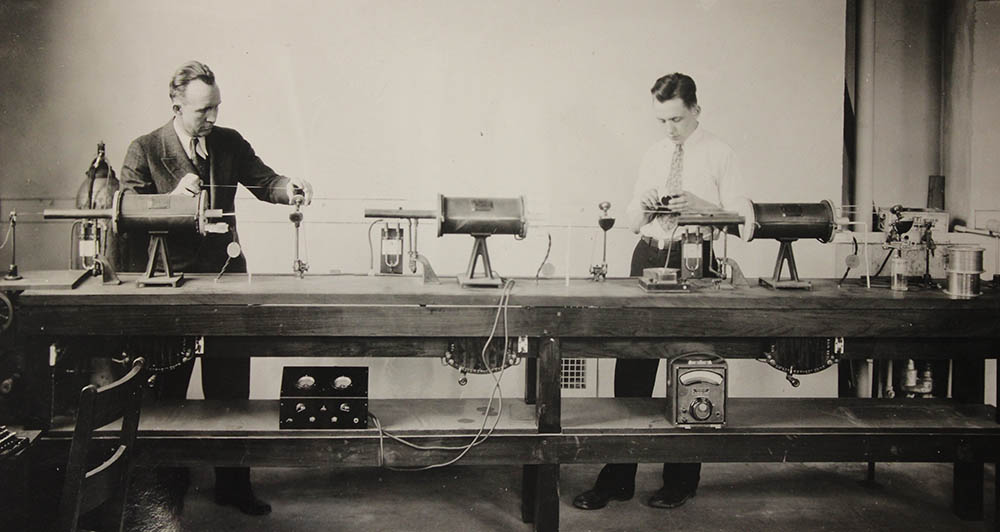
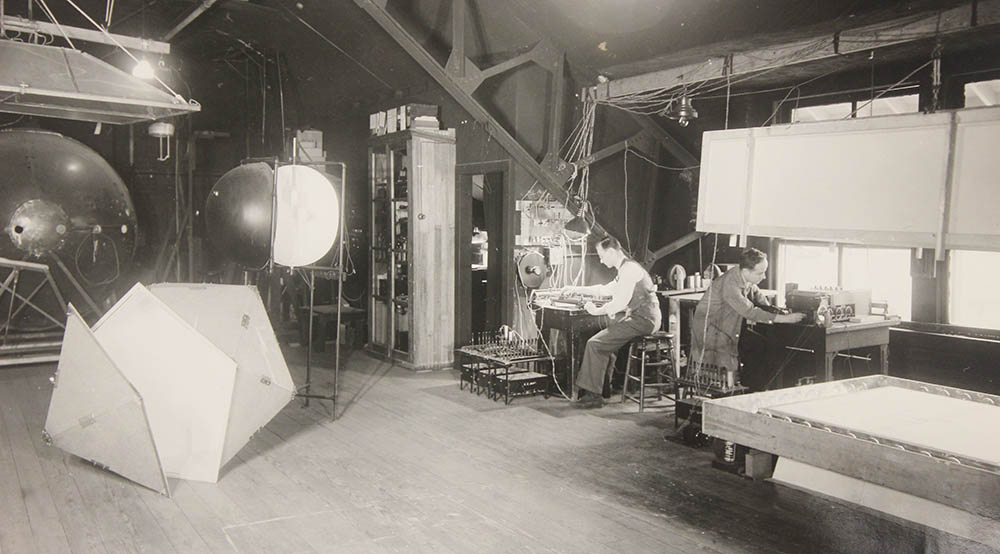
The Rise of Industry-Sponsored Research
The relationship between industry and the faculty of the EE Department was extremely tight in the early decades of the 20th century. Many faculty came with industry experience, or left the department after just a few years to help build the growing electrical and telecommunications industry.
It was a fertile time for Benjamin Bailey to begin his 22-year tenure as Chair of Electrical Engineering in 1922. Bailey was not only an administrator and historian, but an inventor who worked for a brief time at Detroit Edison Company with Henry Ford, who was in charge of the steam machinery. “When he gave this up to build a horseless carriage,” said Bailey, “everyone felt sorry for him. I have heard that he got on quite well.”
Bailey had strong ties to industry, and invented a number of electrical devices that found their way into society. The most important of these was the single-phase capacitor motor, completed in 1925, which rivaled a two-phase motor in efficiency – previously believed to be impossible. According to Bailey’s grandson, Detroit Edison came to Bailey to find out whether anyone could invent a motor that would enable refrigeration in the home. “He did the calculus in his head and said it was possible and invented this type of motor,” said Michael Bailey.
The motor was widely used, and some of the royalties received from his patents were spent on laboratory equipment. In acknowledgement of this invention, Bailey was honored as a Modern Pioneer in the American Frontier of Industry by the National Association of Industry at a ceremony held February 15, 1940, along with Henry Ford, who had by then invented the Model T and founded Ford Motor Company.
It is worth noting that Bailey scarcely mentioned the impact of WWI (1914-1918) on the department, except to note the service of individual faculty. However, it may be more than coincidence that shortly following the war, in 1920, the Department of Engineering Research (later called the Engineering Research Institute) was established. It would signal the growing importance and prevalence of sponsored research. Research became more of a group activity, carried out by faculty and their students in university labs. Funding, when available, came largely from industry.
Rise of Electronics in the New Age of Vacuum Tubes
Michigan was a pioneer in the introduction of electronics to the curriculum, and it all started with vacuum tubes. By the second half of the 1910’s, vacuum tube technology had developed to the point where it significantly enhanced the performance of radio and other electronic devices. A new vacuum tube radio introduced in 1924, built with inexpensive vacuum tubes, caused a huge surge in consumer interest and consumption.
Departmental instruction in electronics had been available since 1915 in connection with the study of vacuum tubes in radio and in certain physics courses. Bailey called vacuum technology, “one of the greatest factors influencing our civilization” in a 1922 essay entitled The Future of Electrical Engineering. Vacuum tubes enabled long distance telephony, radio communication, and wireless telephony (such as between airplanes and ground stations).
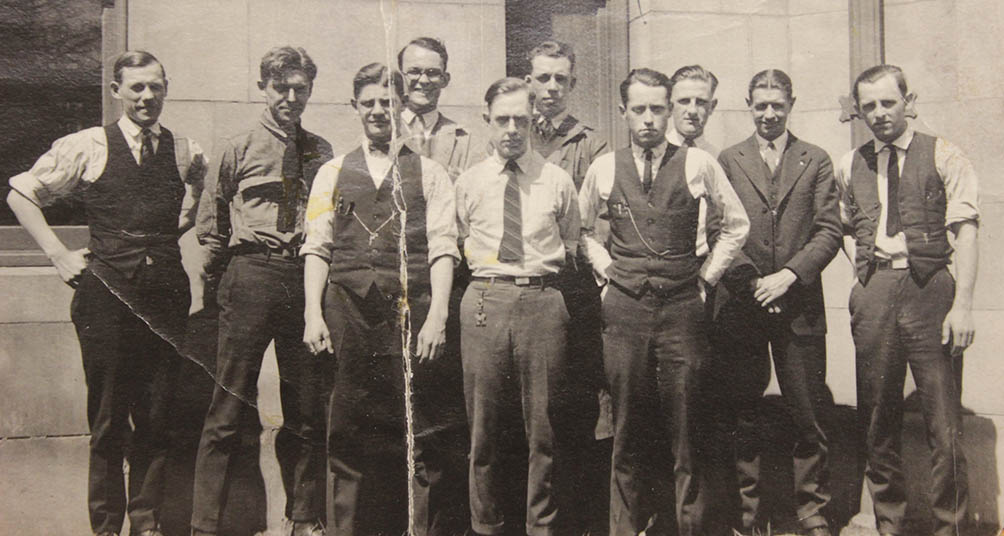
The increasing use of mercury vapor lamps, neon and fluorescent tubes in illumination, the tremendous growth of radio and television, and the introduction of the photoelectric cell all contributed to the growth of electronics as core to electrical engineering.
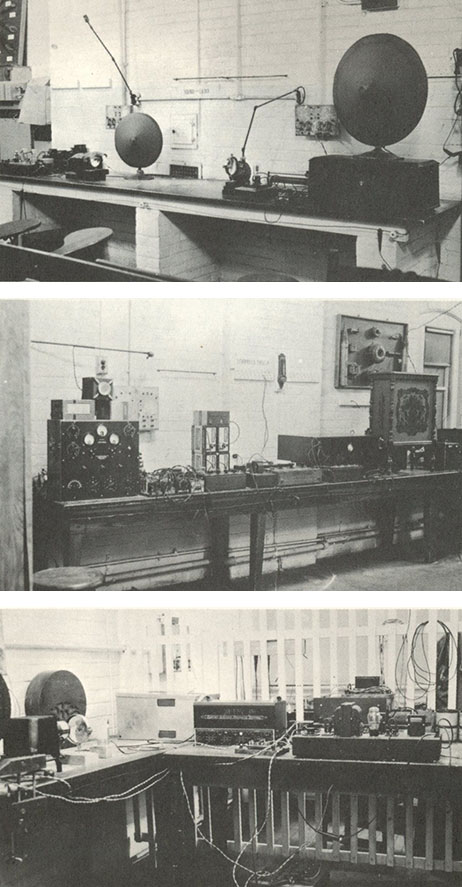
In 1930, electronics was offered as an elective, and in 1931 it was made a requirement, the first such requirement by an engineering school in this country. The name of this course was “Electronics and Vacuum Tubes.” Stephen Attwood, Lewis Holland and Bill Dow planned the expansion of the electronics curriculum, which at that time included instruction in industrial electronics, networks, gaseous-conducting electronic apparatus, theory of high-vacuum electron tubes, and microwave electron tubes. Dow developed several additional courses in electronics, and came out with his landmark textbook, Fundamentals of Engineering Electronics in 1937. It remained a standard for many years.
Prof. Lewis Holland (BSE ’23, MSE EE ’26) was a key contributor to the field of communication and communication-related electronic applications, especially radio. He was hired as an instructor in 1926 to assist in the expanding program in electronics, and was considered a pioneer in the field. He chaired the curriculum committees for both the department and the College following WWII.
In 1937, the department held a Summer Electronics Institute on campus, in collaboration with General Electric Company, Westinghouse Corporation, Bell Telephone Laboratories and Radio Corporation of America. The Institute reportedly attracted the most notable scientists in the field, and their lectures focused on electronic principles for teachers, engineers and physicists, as well as graduate students.

Great Depression Years: 1929-1939
The worst year for the department during the Great Depression was 1933. All salaries were reduced, and the department had to let go of their newest faculty member.
Between 1926 and 1942, the department consisted of the same 11 faculty: Stephen Attwood, Benjamin Bailey, Bull, Cannon, William Gould Dow, James Gault, Henry Higbie, Lewis Holland, Alfred Lovell, Arthur Moore, and Melville Stout.
William Gould Dow, who would become extremely important to the future of sponsored research in Michigan Engineering, was rumored to have almost been let go as well during these years. Fortunately, one of his colleagues convinced the Dean to keep him.

The depression seemed to have an impact on enrollment. From a record high of 84 graduating students in 1924-25, only 47 graduated ten years later. By 1939-40, the number of bachelor’s degrees granted had fallen to 40. However, during the same time there was a steady increase in the number of graduate students, so that by the end of the 1930’s, 12-14 students per year graduated with a master’s degree. Reportedly, only seven PhD degrees were granted during the 1930’s.
This decade brought the department’s first courses in radio. Together with courses in telephones, radio became the backbone of communications studies in the department until the 1940s. Instruction in television was first offered in 1939.
WWII and Post War Expansion: Government Sponsored Research
While WWI seemed to have minimal direct impact on the department, WWII (1939-1945) influenced the nature of research in engineering departments throughout the country.

“In the early days” of the war, recalled Bailey, “engineers were divided into Civil and Military Engineers. It soon became apparent that we were all to become Military Engineers.” Faculty were called upon to conduct government research away from Michigan, and students were called to war.
In 1944, Prof. William Gould Dow was on leave at the Radio Research Laboratory at Harvard University working on blinding enemy radar, using vacuum tubes a thousand times more powerful than their prewar predecessors. Prof. Attwood was on leave at Columbia University, investigating radio wave propagation for military purposes throughout the entire radio frequency spectrum. And Prof. Bull spent nearly a year in New Jersey with the Signal Corps. Prof. Bailey was back in Michigan doing work in powder metallurgy, and Prof. Holland was assisting the Physics Department in the development of secret electronic weapons.
The war impacted the curriculum as well. Holland and Attwood developed several new courses in radar. It was typical for as many as 90% of the students to take these courses, and students were allowed to graduate despite lacking required courses. Holland developed a 12-week course for Signal Corps officers, and in 1943, the department as a whole had to provide a unique course of study for 4 different groups of students: civilians, Army, Navy, and Marine trainees.
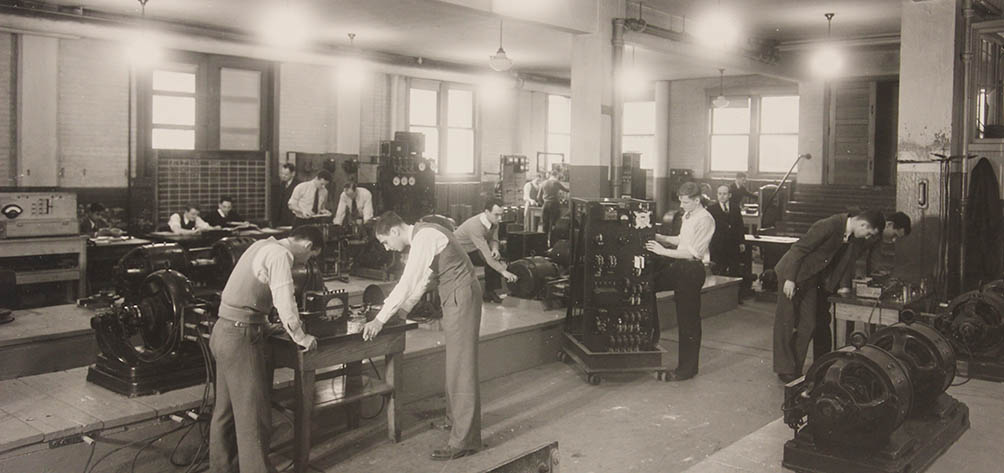
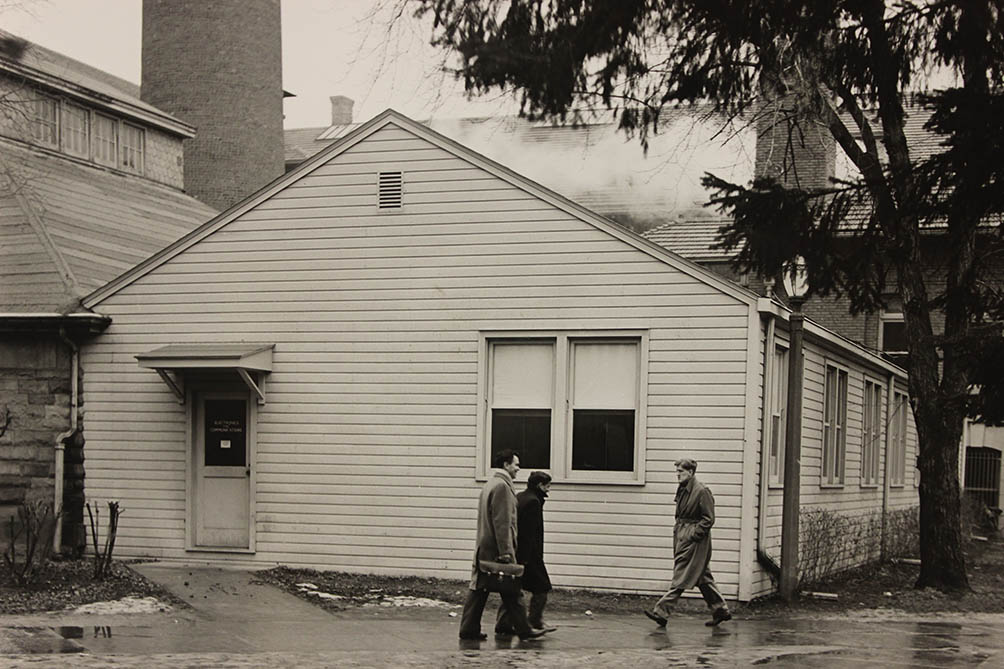
In 1946, before any new labs were established, the department labs consisted of power and machinery, research and measurement, and electronic labs. The circuits and machinery courses were held in a single room in the basement of West Engineering, with as many as four labs occurring at the same time. In 1947, the EE Department moved into the new south wing of the East Engineering Building.
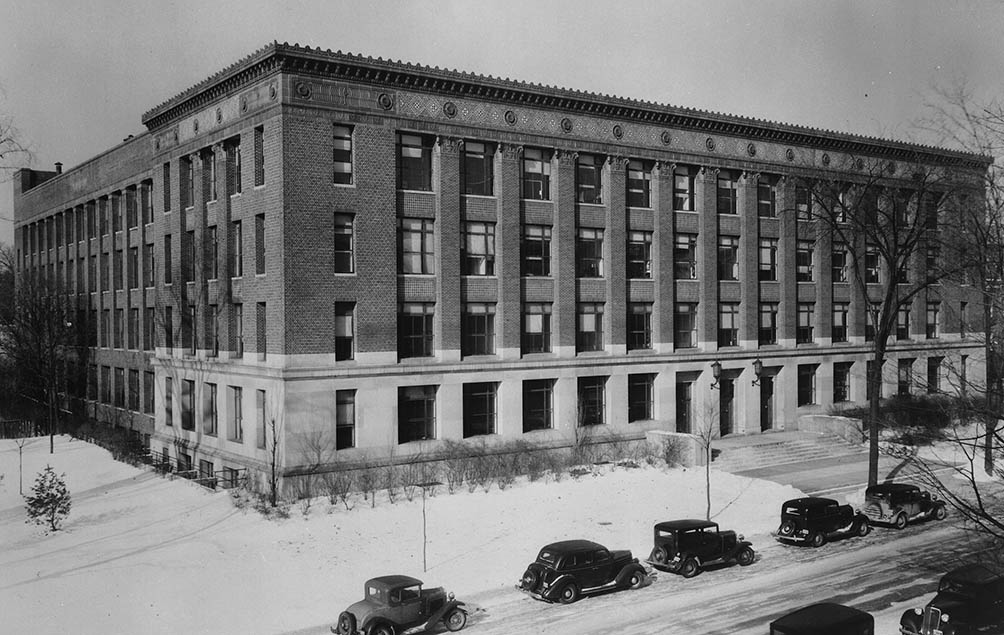
After 1945, new faculty were hired in traditional areas of communications, electronics, power, machine design, and illumination, as well as two new areas: network synthesis and computers. Between 1946 and 1958, undergraduate students focused in either Electronics Communication or Machinery Power.
Bringing Research to the Midwest
Great leaders see the future – and take all available resources at their disposal to shape the world around them and take advantage of future possibilities. William Gould Dow was such a leader. He dreamed big, and executed brilliantly. His dreams helped not only the EE Department, but the College of Engineering as a whole.
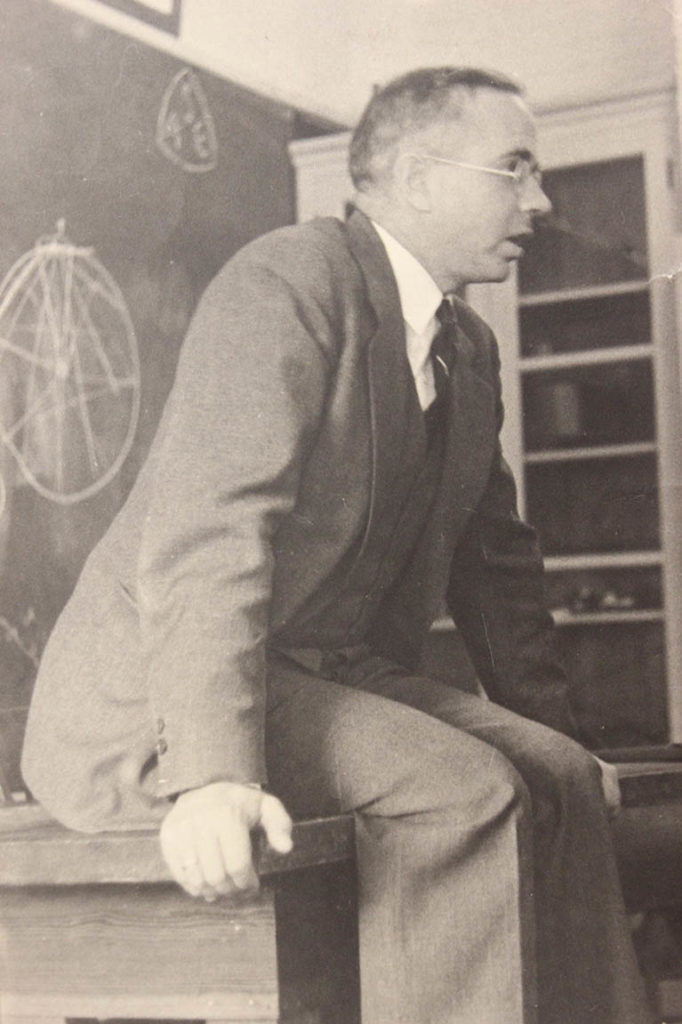
By the time Prof. Dow was hired as an Instructor in 1926, he already had six years of industrial experience. In 1941, he initiated a major research project sponsored by the Fisher Body Division of GM that resulted in a number of patents.
From 1943-1945, Dow worked in the Radio Research Lab at Harvard, with microwave frequency electron tubes and equipment. He reduced the effectiveness of enemy radar by almost 100 percent, and is credited with saving countless lives of allied airmen.
During his time at Harvard, Dow proved to be a superb administrator and consummate teacher. He always took time to explain the “why” of what they were doing to younger members of the group. He was seen as scrupulously honest and above-board, while committed to getting the job done. When Dow returned to Michigan in 1945, at the age of 50, he brought many members of his team back with him as graduate students, research associates, or staff members.
At that time, most research and development programs with ties to academic institutions were being carried out either along the Atlantic or the Pacific coasts. The R&D programs that existed in the Midwest, such as the research complex at Wright-Patterson Air Force Base (WPAFB) in Dayton, Ohio, were not associated with universities in any major way.
After the war, the government recognized the contributions made by the engineers and scientists to its successful outcome, and began to fund specific academic programs throughout the country. Prof. Dow saw this as an opportunity to expose students from the Midwest to research in new technologies through the establishment of major laboratories for large-scale research. Prof. Emerson W. Conlon, Chair of Aeronautical Engineering at U-M, and Dr. William L. Everitt, Dean of Engineering at the University of Illinois, had the same vision – as did MIT, Stanford University, and UC-Berkeley.
Prof. Dow and Prof. Conlon approached senior U.S. Air Force personnel at WPAFB in December, 1945 to obtain a research program in the guided missile area. This resulted in the establishment of the Michigan Aeronautical Research Center (MARC) on July 1, 1946. This was renamed “Willow Run Laboratories” because of its establishment at the Willow Run Airport. Willow Run developed over the years into a major center for sophisticated and creative research and development.
Willow Run was just the start. Within a fairly short period of time, Dow helped create and organize at least 13 laboratories and research units, including: the Electron Tube Laboratory, the Plasma Engineering Laboratory, the Space Physics Research Laboratory, the Electronics Defense Group, and the Division of Research Development and Administration (DRDA), now called the Office of Research and Sponsored Projects.
Several of these units served the entire College and even University (in the case of DRDA). Three of these units were integral to the future of ECE: the Electron Tube Laboratory, Willow Run Laboratories, and the Electronics Defense Group.
Prof. Dow mentioned many times that one of his primary concerns was graduate education – and he saw federal funding as the best way to achieve this goal. There were very few doctoral degrees issued before 1945, possibly a few as 10. Sponsored research gave many more students the opportunity to reach this goal.
At the close of the war, enrollment jumped due to the G.I. Bill. Undergraduate enrollment reached 700, graduate enrollment 100, and the faculty numbered 28.
Dow was an influential leader as department chair (1958-65), mentor, and researcher. He stayed active and involved with the department and the College long after his retirement from teaching in 1964. Dow died in 1999 at the age of 104. The William Gould Dow Distinguished Lecture was established in his honor, thanks to the generous donations of family and friends; the first lecture was given in 2001.
The next section of this history focuses on the development of labs and research areas following WWII roughly through the 1980’s.
 MENU
MENU 
